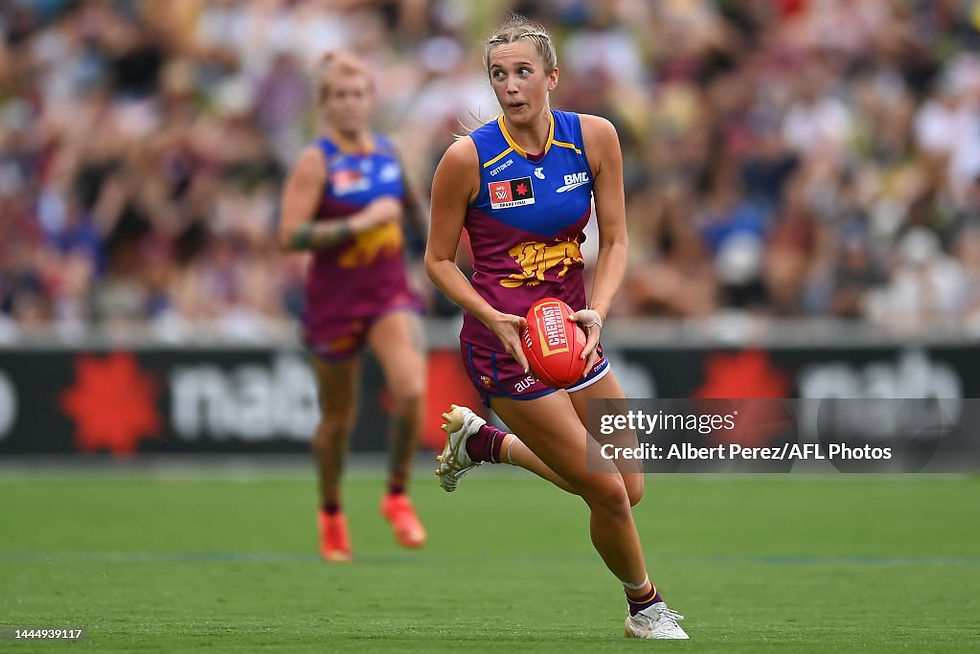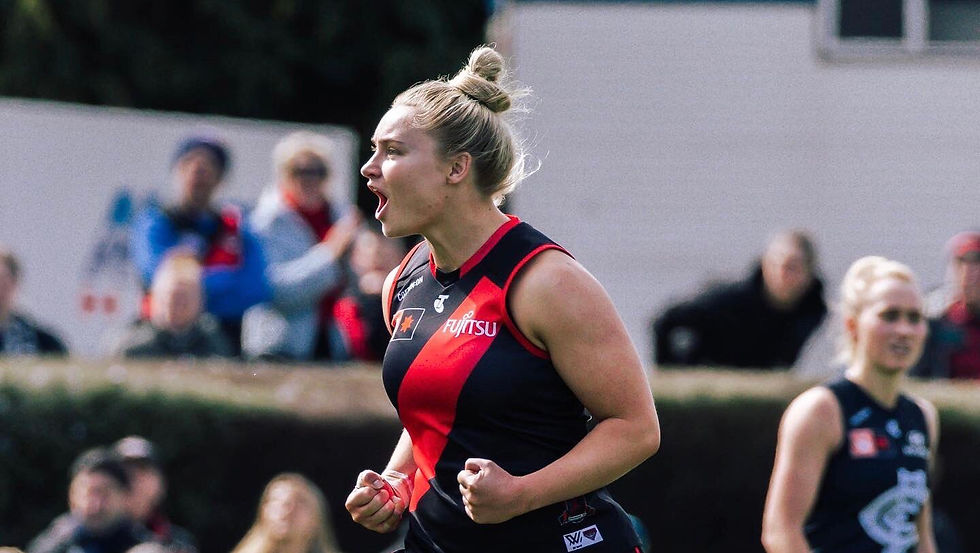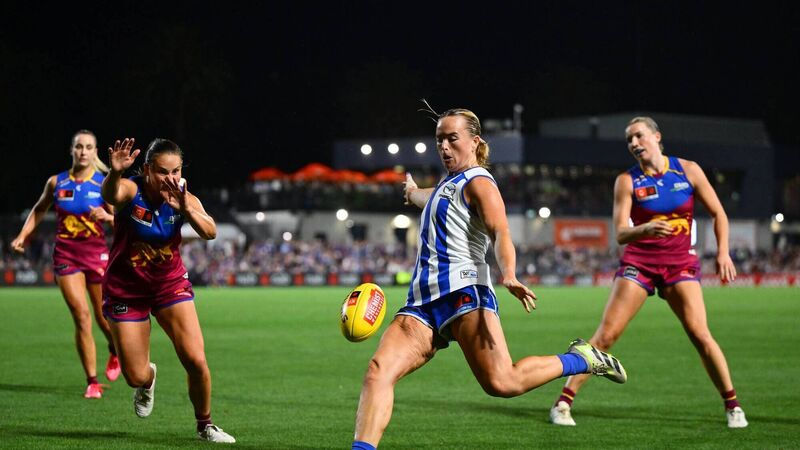Tall Timbers: AFLW The Numbers Don't Lie - Goal Kicking Edition
- Simone Wearne

- Jul 15
- 4 min read
Updated: Jul 16
Welcome back to The Numbers Don’t Lie, your weekly look back on the most recent season of AFLW. The countdown is well and truly on now, Season 10 is fast approaching and this week it’s all about what really matters in footy – the goals!
Where did they come from? Whether it was a clutch set shot, a sneaky snap or a long bomb, Season 9 provided some impressive work in front of goals. Let’s take a look.
Topping the goalkicking table last season was Geelong’s Aishling Moloney, averaging 1.9 goals per game. A standout from round 1, Moloney was a consistent force and proved nearly impossible to contain when the Cats surged forward.

Impressively, Moloney more than doubled her output from the 2023 season, improving her efficiency along the way.

Hot on Moloney's heels was Brisbane’s Taylor Smith, with 1.6 goals per game and a season total of 22 from just 11 outings. Taylor led the league in total goals scored with 22 majors.
In a similar fashion to Moloney, Smith had a standout season. In 2023 she kicked 9 goals, with her next best 7 goals back in 2022's Season 6.

And there were certainly some other players up forward who had important seasons in front of the big sticks.
Adelaide’s Caitlin Gould, along with North Melbourne duo Kate Shierlaw and Alice O’Loughlin weren’t far behind the top two, each averaging 1.5 goals.
For Gould, it was her ability to impact both in the ruck and inside 50 that gave Adelaide a real edge.

Looking across the league, every club had a go-to forward of some kind. Some were familiar names, others a little less expected.
Mia Austin led the way at Carlton, Imogen Barnett topped the charts at Collingwood, and Daria Bannister was Essendon’s key target.
At her third club, Bannister had a career best year, playing 12 games in total, the most since her tally of 10 back in 2021 at North.
She missed half of the 2023 season due to an ACL rupture, the second time she had endured the injury (first was back in 2018 whilst she was contracted with the Western Bulldogs). She managed only six games whilst she was on the park.
To return in 2024 post-injury with 10 goals and 8 behinds, by far her biggest output during her time in the W so far, was a brilliant effort and highlights her importance to the Bombers.
She now prepares for her 9th AFLW season at just 26 years of age and is sure to be a weapon in the red and black.

Over at Hawthorn, Aine McDonagh became a focal point with 16 goals for the season. She turned heads throughout the season, not just for her goals, but for how often she got herself into scoring positions.
For the GWS Giants, Zarlie Goldsworthy continued her rise with 13 goals.
Down the road at the Swans, Rebecca Privitelli’s 12-goal campaign helped steady the Swans in tight contests, and Gemma Houghton (6th most goals for the season) reminded everyone of her class with a 17-goal return at Port Adelaide.
But no forward unit had quite the firepower of North Melbourne. With three players, O’Loughlin, Shierlaw, and the ever-reliable Tahlia Randall all finishing inside the top 10 for total goals kicked.
Superstar mid Jasmine Garner was not far behind, equal 10th in the league kicking a handy 14 goals for the Kangas.

North’s ability to share the load made them a nightmare to match up on. Adelaide and Brisbane weren’t far behind, each with two players landing in the top 10: Gould and Ponter for the Crows, and Smith and Davidson for the Lions.

Some of the most exciting storylines of the season came from players who stepped into the spotlight. Alice O’Loughlin’s rise was a major talking point. After being used more sparingly in previous seasons, she became a genuine weapon for North with her average of 1.5 goals per game.
O’Loughlin kicked 19 goals, far more than her next best from season 7 in 2022 where she bagged a total of 8.
And when it mattered most, North had another standout, Vikki Wall.
The Irish star showed nerves of steel across the finals series. In a season where she contributed 12 goals for the Kangaroos, she kicked 5 in the two last games on the year. 3 against Port in the Prelim, and another 2 on the biggest stage of all, Grand Final day against Brisbane.

While the league continues to evolve, the efficiency side of goalkicking is becoming more and more important. It’s clear that players like Moloney and Gould, who were consistently getting 3–4 shots on goal per match and converting well, offered not just volume, but impact.
It’s that kind of finishing power that separates the good from the elite.
Fresh talent is really starting to shape forward structures around the league. With more game time and development, expect some of these new faces to make serious statistical noise in Season 10.
In a season where margins were tighter and forward entries more precious, having a goalkicker who could convert wasn’t just a luxury, it was a necessity. The numbers don’t lie. If you want to win finals, you need finishers. And in 2024, we saw exactly who they were.







Comments